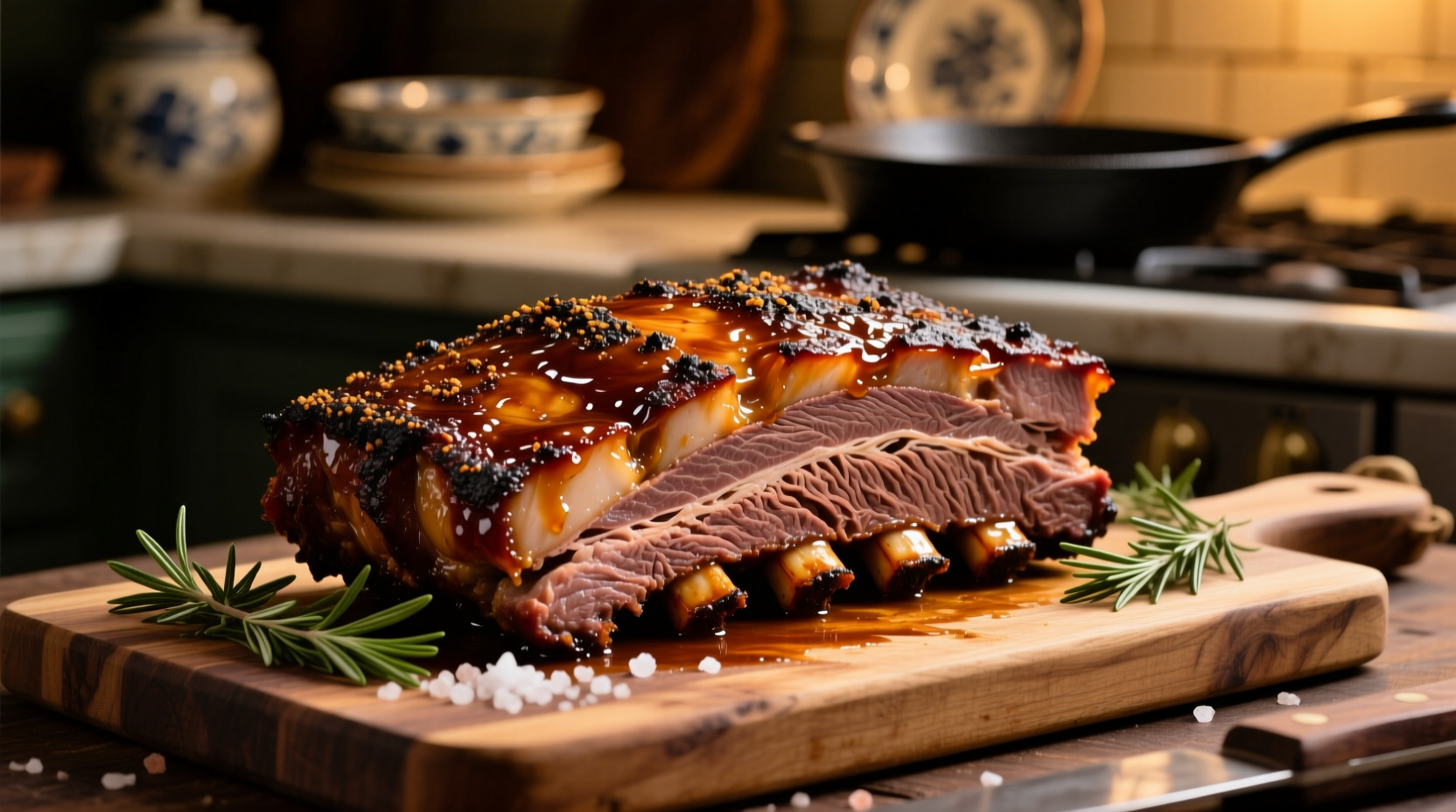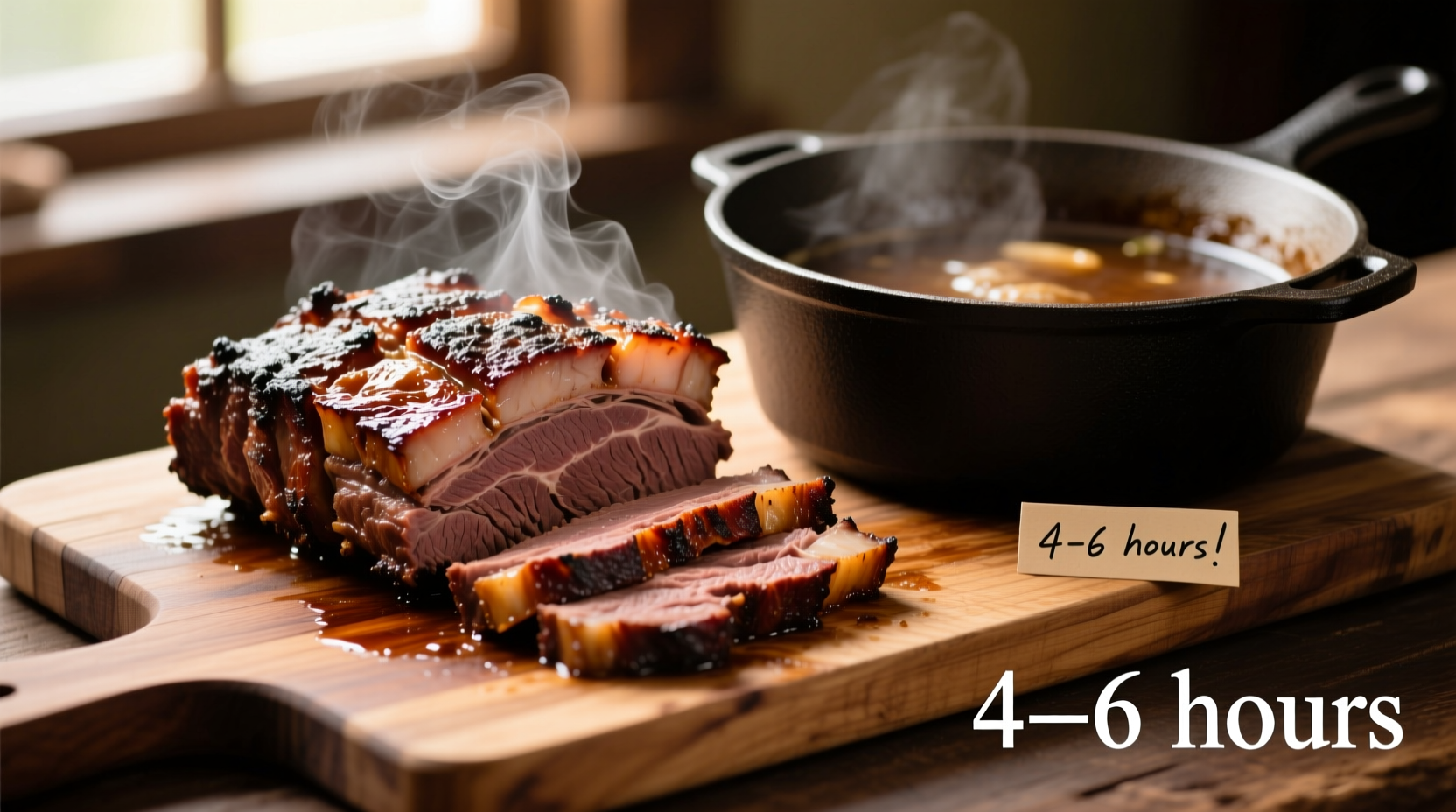For perfectly tender slow-cooked brisket, cook at 225-250°F for approximately 1 to 1.5 hours per pound until the internal temperature reaches 195-205°F. A standard 12-pound brisket typically requires 12-18 hours total cooking time. The exact duration depends on your cooker's temperature consistency, brisket size, and desired tenderness level.
Nothing beats the rich, melt-in-your-mouth texture of properly slow-cooked brisket. As a home cook, you've probably wondered exactly how long to slow cook brisket to achieve that perfect balance between tenderness and structure. Getting this timing right separates good barbecue from truly exceptional results. Let's explore the precise factors that determine cooking duration and how to monitor your brisket for perfect results every time.
Understanding Brisket and the Science Behind Slow Cooking
Brisket comes from the lower chest of the cow and contains substantial connective tissue that requires slow, low-temperature cooking to transform into gelatin. This process, called collagen breakdown, occurs most effectively between 160-205°F. Rushing this process by cooking too hot creates tough, dry meat, while insufficient cooking leaves the brisket chewy and unpleasant.
According to USDA Food Safety guidelines, beef should reach a minimum internal temperature of 145°F for safety, but for brisket, you need to go much higher—to 195-205°F—to fully render the fat and connective tissues. The USDA Food Safety and Inspection Service confirms that properly cooked brisket at these temperatures is both safe and achieves optimal texture.

Brisket Cooking Timeline: What Happens During the Process
Understanding the phases your brisket goes through helps manage expectations about cooking duration. Here's what happens during the slow cooking journey:
| Time Period | Internal Temperature | What's Happening |
|---|---|---|
| 0-4 hours | 100-150°F | Meat absorbs smoke flavor; surface dries forming bark |
| 4-8 hours | 150-170°F | The "stall" begins as evaporative cooling slows temperature rise |
| 8-12 hours | 170-195°F | Collagen converts to gelatin; meat begins to tenderize significantly |
| 12-18 hours | 195-205°F | Optimal tenderness achieved; probe should slide in like butter |
Factors That Affect Your Brisket Cooking Time
While the "1-1.5 hours per pound" rule provides a starting point, several variables influence the actual time needed for your specific brisket:
Cooker Temperature Consistency
Maintaining a steady 225-250°F is crucial. Fluctuations of more than 25°F can significantly extend cooking time. Digital thermometers with remote monitoring, like those recommended by the National Center for Home Food Preservation, help maintain consistent temperatures.
Brisket Size and Thickness
Thicker cuts take longer to cook through. A 14-pound packer brisket with substantial fat cap will require more time than a trimmed 10-pound flat cut. Always measure thickness at the thickest point when estimating cooking duration for how long to slow cook brisket properly.
The Stall Phase
Between 150-170°F, evaporation from the meat's surface creates a cooling effect that can stall temperature rise for several hours. This natural phenomenon, documented in culinary research by institutions like the University of Illinois Meat Science program, is normal and shouldn't prompt you to increase cooking temperature.
Monitoring Progress: Beyond Just Time
Relying solely on time can lead to under or overcooked brisket. Instead, use these indicators to determine when your brisket is done:
- Internal temperature: 195-205°F at the thickest part
- Probe test: A thermometer or skewer should slide in with almost no resistance
- Bend test: When lifted with tongs, the brisket should bend significantly at the center
- Texture: The surface should feel soft, not firm when pressed
Remember that brisket continues to cook during resting—a critical step many home cooks skip when determining how long to slow cook brisket including resting time. Plan for an additional 1-2 hours of resting before slicing.
Troubleshooting Common Brisket Timing Issues
Even with careful planning, issues can arise. Here's how to handle them without compromising your cooking timeline:
Brisket Cooking Too Slowly
If your brisket seems stalled for more than 6 hours:
- Check your cooker's temperature consistency
- Consider wrapping in butcher paper or foil (the "Texas crutch") to push through the stall
- Never increase temperature dramatically—this creates uneven cooking
Brisket Cooking Too Quickly
If your brisket is approaching target temperature much faster than expected:
- Lower the cooker temperature gradually
- Move the brisket to a cooler part of the cooker
- Consider removing it temporarily and holding in a preheated cooler with towels
The Critical Resting Phase: Often Overlooked in Brisket Timing
Many home cooks mistakenly believe their brisket is ready immediately after reaching temperature, but resting is essential. During this phase:
- Juices redistribute throughout the meat
- Residual heat continues tenderizing the brisket
- Texture improves dramatically for cleaner slices
For optimal results when considering how long to slow cook brisket including resting, allow 1-2 hours resting time wrapped in a cooler or warm oven (150-170°F). This isn't part of the cooking time but is essential for perfect results.
Perfect Slicing Technique After Slow Cooking
After investing hours in slow cooking, proper slicing ensures you enjoy the fruits of your labor. Always slice against the grain, which shortens the muscle fibers for maximum tenderness. For brisket, this means:
- Identifying the direction of the grain in both the flat and point sections
- Adjusting your slicing angle as the grain direction changes
- Cutting slices 1/4 to 1/2 inch thick for optimal texture
Slicing too soon after cooking—before adequate resting—causes precious juices to escape, resulting in drier meat regardless of how perfectly you managed how long to slow cook brisket.
Adapting Brisket Timing for Different Cooking Methods
While traditional smokers provide the classic brisket experience, many home cooks use alternative methods. Here's how cooking duration changes:
- Smoker (225-250°F): 1-1.5 hours per pound (most traditional method)
- Oven (275°F): Slightly faster—about 45-60 minutes per pound
- Slow cooker: Not recommended for whole brisket due to texture issues
- Reverse sear method: Adds 30-60 minutes at higher temperature after slow cooking
Regardless of method, the internal temperature target remains the same—195-205°F—which is the most reliable indicator of doneness when determining how long to slow cook brisket to perfection.
FAQ: How Long to Slow Cook Brisket
How long does it take to slow cook a 10-pound brisket?
A 10-pound brisket typically requires 10-15 hours at 225-250°F. Always verify doneness with a thermometer—the internal temperature should reach 195-205°F, regardless of the clock. The exact time depends on your cooker's consistency and the brisket's thickness.
Can you overcook brisket when slow cooking?
Yes, overcooking brisket is possible. Beyond 205°F, the muscle fibers can become too loose, resulting in mushy texture rather than tender-but-structured meat. Monitor closely once your brisket approaches 200°F, checking tenderness with the probe test every 30-60 minutes.
Should I wrap my brisket during slow cooking, and how does this affect timing?
Wrapping (using the Texas crutch method) typically happens around 150-170°F to push through the stall phase. Butcher paper or foil reduces cooking time by 1-3 hours by preventing evaporative cooling. If wrapped, expect to reach final temperature faster, but continue monitoring internal temperature rather than relying solely on time.
How do I know when my brisket is done without a thermometer?
While a thermometer is highly recommended, you can check doneness by the bend test: lift the brisket with tongs—it should bend significantly at the center with little resistance. The probe test is another method: a wooden skewer should slide into the thickest part with almost no resistance, like butter. However, these methods are less reliable than temperature measurement.
Why does my brisket take longer to cook than recipes suggest?
Several factors can extend cooking time: temperature fluctuations in your cooker, thicker cuts of meat, frequent lid openings, or the natural stall phase between 150-170°F. Don't rush the process—brisket cooks when it's ready. Focus on internal temperature (195-205°F) and tenderness rather than strict time guidelines.











 浙公网安备
33010002000092号
浙公网安备
33010002000092号 浙B2-20120091-4
浙B2-20120091-4